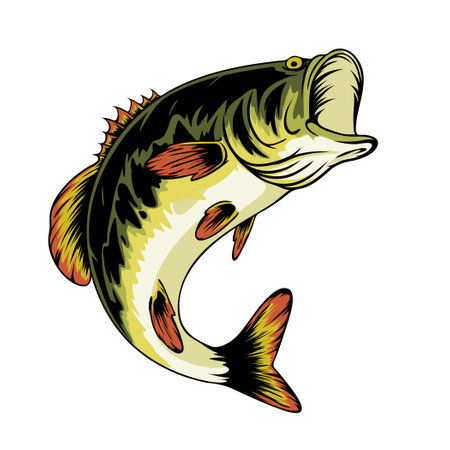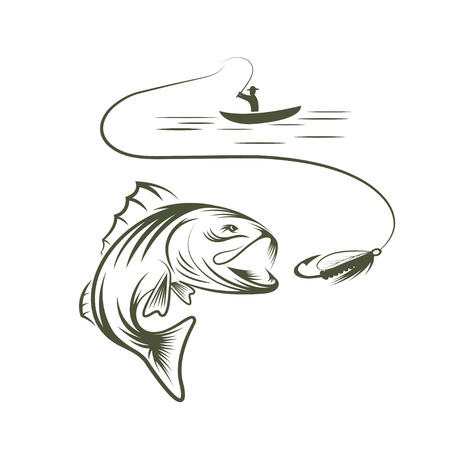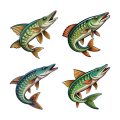Introduction to Feeder Fishing Essentials in the UK
Feeder fishing is a cornerstone of angling culture across the UK, offering a blend of technical skill and relaxed enjoyment that appeals to beginners and seasoned anglers alike. As British waters range from tranquil stillwaters to fast-flowing rivers, local conditions and weather patterns play a crucial role in determining which accessories are best suited for a successful session. Having the right kit isn’t just about convenience; it’s about adapting to the unique demands of each venue—whether you’re targeting roach, bream, or carp. From keepnets designed for fish welfare to bait tubes that help maintain fresh groundbait throughout your session, every accessory has its place in the British angler’s arsenal. Understanding these essentials—and how they fit into the wider context of feeder fishing practices—ensures you’re always prepared, no matter where your fishing adventures take you in the UK.
Keepnets and Landing Nets: Respecting British Fishery Rules
When feeder fishing in the UK, understanding the importance of keepnets and landing nets is not just about convenience—its about responsibility. British fisheries are renowned for their conservation efforts, and strict rules often govern the use of nets to ensure fish welfare and sustainable angling. Let’s break down their roles, legal considerations, and how to select gear that aligns with local regulations.
The Role of Keepnets and Landing Nets in UK Fishing Venues
Keepnets allow anglers to retain their catch alive in water until weigh-in or release, while landing nets are essential for safely bringing fish to the bank without causing harm. Both accessories help prevent unnecessary injury to fish—a priority at most British venues.
Key Conservation Considerations
- Fish Safety: Only soft, knotless mesh is permitted to protect delicate scales and fins.
- Fishery Requirements: Many venues require a minimum net length (typically 2-3 metres for keepnets) and prohibit keeping certain species or weights together.
- Time Limits: Fisheries may limit how long fish can remain in a keepnet—commonly no more than 5 hours.
British Fishery Regulations at a Glance
| Accessory | Regulation Requirement | Common Venue Rules |
|---|---|---|
| Keepnet | Knotless, minimum 2-3m length | No carp above 5lb; max 50lb per net; use separate nets for certain species |
| Landing Net | Knotless mesh; appropriate size for target species | Mandatory for all anglers; disinfect before use at some venues |
Practical Tips for Selecting Nets That Meet UK Standards
- Check Venue Rules: Always review specific venue regulations before your session.
- Select Quality Materials: Opt for strong, knotless mesh with reinforced frames. This ensures durability and compliance.
- Easy-to-Clean Designs: Many UK venues require nets to be dipped in disinfectant tanks—choose nets that dry quickly and are easy to wash.
- Sufficient Size: For mixed fisheries, bring multiple keepnets to segregate species as per rules.
Navigating the world of keepnets and landing nets in the UK isn’t complicated if you follow best practices and respect local guidelines. Doing so not only keeps you on the right side of fishery management but also helps maintain Britain’s reputation for responsible coarse angling.

3. Rod Rests and Bank Sticks: Setting Up for Comfort and Precision
When it comes to feeder fishing across the UK, having the right rod rests and bank sticks is more than just a matter of convenience—it’s essential for achieving accuracy and enjoying longer sessions on the bank. British anglers know that our waters can be unpredictable, with everything from gusty winds to soft ground along the riverbank or lake edge. A sturdy rod rest, paired with reliable bank sticks, ensures your rod remains steady, reducing fatigue and helping you react swiftly when you get a bite.
Rod rests come in various shapes and materials, from classic V-shaped heads to U-shaped or even flat-top designs, each tailored for different feeder setups. Many UK anglers prefer rests with non-slip coatings or grooves to keep their rods secure, especially during windy conditions common on exposed reservoirs and gravel pits. Adjustable bank sticks are equally important—they allow you to position your rod at the perfect angle for the swim you’re fishing, whether you need to keep your tip high above marginal weed or low to avoid line drag from surface flow.
It’s worth investing in robust stainless steel or lightweight aluminium bank sticks that can handle the soft banks found at many British fisheries. Quick-release fittings are popular among match anglers here, making it easier to reposition your setup without disturbing your swim. Always check local fishery rules as some venues have specific requirements about how rods are positioned, especially regarding safety and consideration for other anglers.
In summary, using quality rod rests and bank sticks not only protects your tackle but also maximises your chances by keeping everything stable and precisely placed—a hallmark of successful feeder fishing in the UK.
4. Bait Tubes and Bait Boxes: Staying Organised on the Bank
When feeder fishing in the UK, staying organised with your bait is crucial for both efficiency and fish welfare. British anglers have developed a preference for specific types of bait containers that help maintain freshness and allow for easy access throughout a session. Here’s an overview of the most popular options and practical tips to ensure you’re always prepared while respecting local best practices.
Popular Types of Bait Containers Among UK Anglers
| Container Type | Main Use | Key Advantages |
|---|---|---|
| Bait Tubes | Storing maggots, casters, pinkies, or squatts | Ventilated lids prevent condensation; easy to pour out small quantities |
| Bait Boxes with Lids | Pellets, corn, worms, groundbait mixes | Secure lids keep bait fresh; stackable design saves space in your carryall |
| Bait Tubs (Large) | Bulk groundbait or mixed particles | Wide openings for mixing; robust construction suited to rough bankside use |
| Bait Trays/Bait Waiters | Quick access to multiple baits at once during matches | Organises several boxes/tubes for fast switching; fits onto seatboxes or bait stands |
Best Practices for Keeping Your Bait Fresh
- Avoid Direct Sunlight: Always keep containers shaded, using an umbrella or placing them under your seatbox tray to prevent baits from overheating or drying out.
- Use Ventilated Lids: Especially for live baits like maggots and casters, ventilated lids allow airflow and minimise sweat build-up inside the box.
- Damp Towels: Place a damp towel over open tubs on hot days—this traditional tip keeps worms and other live baits lively for longer periods.
- Change Water Regularly: If storing dead maggots or using water with pellets/corn, change it often to avoid spoilage.
- Tidy Up Spills Immediately: Loose bait can attract birds or rodents and is frowned upon at many UK venues.
Bait Storage Etiquette on UK Fisheries
Many commercial fisheries and club waters in Britain have strict rules about bait use and cleanliness. Always check local regulations regarding permitted baits (especially live vs. dead maggots), maximum quantities, and whether certain tubs are required (e.g., environmentally safe materials). Leaving no mess behind is not just good manners—it’s expected among UK anglers. Carry a spare bag or tub to take all waste home at the end of your session.
5. Feeders and Baiting Tools: Matching Tactics to British Venues
Choosing the right feeders and baiting tools is fundamental to success in UK feeder fishing, as each venue presents its own set of challenges. Here’s a breakdown of the main types of feeders and baiting accessories, alongside practical recommendations for both commercial stillwaters and natural rivers.
Main Types of Feeders Used Across the UK
Cage Feeders
Highly popular on commercial stillwaters and slow-moving rivers, cage feeders are excellent for presenting groundbait with particles like maggots or corn. Their open design allows bait to disperse freely, attracting fish quickly—ideal for carp, bream, and skimmers often targeted in British commercials.
Method Feeders
A staple for targeting carp on well-stocked commercials, method feeders hold a compact ball of groundbait or pellets around the feeder. They deliver an enticing offering right next to your hookbait, making them perfect for pressured venues where fish respond to tight bait presentations.
Open-End Feeders
Favoured on natural waters such as rivers like the Trent or Thames, open-end feeders are designed for longer casts and allow a steady release of groundbait mixed with chopped worms or casters. This makes them ideal when fishing for roach, dace, or chub in flowing water.
Window Feeders
Increasingly used on both stillwaters and rivers, window feeders combine distance casting capabilities with controlled bait release. These are particularly useful during winter or when targeting wary fish that require a subtle approach.
Baiting Accessories for Maximum Efficiency
Bait Tubes and Catapults
Bait tubes help keep your baits fresh and organised bankside—especially vital when using live maggots or soft pellets. For wider waters or when pre-baiting swims, catapults allow precise introduction of loose feed to draw fish into your peg without overfeeding.
Baiting Spoons and Funnels
When accuracy is crucial—such as placing groundbait balls or pellets at distance—a baiting spoon or funnel pot attached to your pole can make all the difference. These tools ensure you’re feeding exactly where your rig will land, reducing waste and boosting bite rates.
Venue-Specific Recommendations
- Commercial Stillwaters: Focus on method feeders and cage feeders loaded with micro pellets or groundbait. Quick-change feeder systems enable you to adapt as conditions change through the session.
- Natural Rivers: Opt for open-end feeders packed with heavier groundbait mixes to combat flow. Don’t forget a selection of window feeders for extra distance or subtle presentations when needed.
The key to success across British fisheries lies in having a versatile kit of feeders and baiting tools tailored to match both venue type and seasonal conditions. By understanding which accessories work best where, you’ll be able to fine-tune your tactics—and put more fish on the bank throughout the year.
6. Clothing and Storage: Preparing for British Weather
Feeder fishing in the UK is as much about adapting to the climate as it is about mastering angling techniques. The British weather is famously unpredictable, so having the right clothing and storage solutions is essential for a comfortable and productive session on the bank, whatever the season.
Weatherproof Clothing for All Conditions
No matter if you’re fishing a windswept reservoir in Yorkshire or a misty canal in the Midlands, investing in quality waterproofs is crucial. A durable, breathable waterproof jacket and trousers are must-haves, keeping you dry during sudden downpours or persistent drizzle. Layering is equally important – thermal base layers, fleece mid-layers, and insulated hats and gloves help regulate your body temperature on chilly mornings or frosty winter days. Don’t overlook wellies or waterproof boots; muddy banks and wet grass are par for the course.
Practical Storage Solutions
Organisation on the bank can make or break a session. UK anglers favour tackle boxes with adjustable compartments to store feeders, hooks, and accessories securely. Bait buckets with airtight lids prevent spillages and keep your bait fresh, even in damp conditions. Modular carryalls allow you to transport everything from extra clothing to lunch without fuss. For longer sessions, a sturdy seatbox doubles up as both storage and comfortable seating – look for models with padded cushions and integrated footplates for added stability on uneven ground.
Staying Organised Year-Round
The secret to effective feeder fishing lies in preparation. Waterproof rucksacks or bags with reinforced seams protect your gear from unexpected showers. Keepnets and landing nets should have their own stink bags or sleeves to avoid unpleasant smells spreading through your car or garage after a long day’s fishing. In colder months, consider hot water bottles or hand warmers stashed in your bag for extra comfort.
By equipping yourself with suitable weatherproof clothing and smart storage options, you’ll stay dry, comfortable, and organised – ready to tackle whatever the British weather throws at you, all year round.
7. Conclusion and Local Tips
Feeder fishing in the UK is an art that combines skill, patience, and the right accessories. By investing in essentials such as robust keepnets, reliable bait tubes, quality rod rests, and proper unhooking mats, you not only enhance your angling experience but also adhere to the high standards set by British fisheries. Remember, attention to detail in your gear selection can make all the difference on the bank.
Top Tips for British Feeder Anglers
- Always Check Fishery Rules: Many UK venues have specific regulations regarding net types and bait containers. Double-check before heading out to avoid any surprises.
- Go for Durability: The British weather is famously unpredictable—choose waterproof, rust-resistant accessories that stand up to rain and mud.
- Pack Smart: Modular tackle boxes and stackable bait tubs save space and keep your kit organised, especially when moving between pegs.
- Keep it Clean: Clean your nets and mats after each session to prevent the spread of disease between waters—a must for responsible UK anglers.
- Don’t Skimp on Comfort: A sturdy seatbox or comfortable chair can be a game-changer during long sessions by the lakeside or riverbank.
Where to Source Quality Accessories Locally
Your local tackle shop remains one of the best places to get advice tailored to your area’s waters. Staff are often keen anglers themselves and can recommend products that work well at nearby venues. Additionally, many UK-based online retailers offer next-day delivery on top brands like Preston Innovations, Guru, and Drennan. For those wanting a bargain, check out regular car boot sales or online marketplaces such as eBay UK or Facebook groups dedicated to second-hand fishing gear—just ensure items are in good condition before purchasing.
Final Word
The right accessories not only improve your results but also make each session more enjoyable and hassle-free. Whether you’re new to feeder fishing or looking to upgrade your kit, focus on practical, fish-friendly gear that meets both personal needs and local requirements. With these tips and sources in mind, you’ll be well-equipped for successful sessions across the UK’s varied waters.


